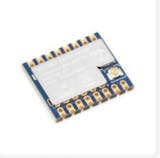Technology has impacted every aspect of life throughout the world. As a result every industry and career path is connected to how we perceive and use technology. It is only an imperative that educators throughout the world are improvising curriculum to introduce latest tech subjects. One such subject has found major applicability and acceptance in a classroom scenario, Robotics.
Robotics is fast becoming popular among students and teachers alike due to its contemporary and progressive nature and essential hands-on experience it provides. Educational institutions, in fact, have become the primary research hub in this area bringing on board government, policy makers and industry leaders by providing path-breaking technology inputs.
What is a Robot?
Simply defined, a Robot is a machine that can be programmed to take and process inputs designed to perform given tasks. With development of artificial intelligence these tasks are becoming more complex to match human-like functioning. A program or software performing these tasks without a hardware interface is also referred to as a robot.
Since these robots are replacing most of monotonous tasks performed by humans, robotics has become an indispensable part of education at university and school level so as to prepare students for future careers.
How far has development and application of Robotics come?
While Siri and Alexa have become household names and favourite meme themes, Google assistant and Hanson Robotics’ Sofia has rattled and awed general masses making headlines throughout the globe. Almost unfathomable development rate and ever-increasing world-wide customer base of these robots present opportunities that we can barely imagine.
Though it may seem that these high-tech advances were made in the past decade or so, history of robotics goes far behind to 1950’s when early robots were being built and academicians began gathering nuances about their programmability.
Machine learning and artificial intelligence may seem like vocab and careers from the future but the future in reality began in way back in the past. Charles Rosen, a robotics researcher, led a Stanford Research institute team in 1958, assigned to develop ‘Shakey’, an industrial robot with complex features. Since then tech giants like Microsoft, Google, Apple and Amazon have not only supported but played a major role in marketing these products and making them inseparable part of every household.
Why should Robotics be taught in schools?
While academia has played an undeniably key role in the field of robotics, it is seen that teaching robotics to school students is yielding remarkable improvement in their overall learning curve. Though innovation in curriculum is necessary in education, schools are adopting Robotics for its all-round positive consequences.
Career oriented
There is almost unanimous acknowledgement that modern education needs to focus more at creating more creators than followers, more innovators than mere users of technology. A child initiated into number of opportunities at school level is more likely to choose a field based on interest and abilities than any other factor. A university ready and eventually industry-ready pioneer can prove to be more beneficial to society.
Creative Thinking
An effective lesson is considered to be the one that teaches learners to think rather than furnishing them with answers. In a robotics class lessons are designed in a way that challenges students to device solutions for problems encountered to accomplish given task. Solution improvisation, as understood by everyone, is an essential life skill.
Heightened engagement
A robotics class, more than any other class, is highly practical driven. Student success can be immediately gauged based on their classroom performance, making it easier for teachers to improve upon curriculum. The very nature of real-time engagement from both teachers and students makes participation an essential focus of this class.
Teamwork
A Robotics project requires coming together of a wide range of different skills making it a team activity. It becomes crucial for collaborating participants to have clear communication among team members. Students are thus introduced to a progressive culture of teamwork. Students with learning disabilities are seen to show better results if they learn in a team.
Hands-on
An actual participation is a better learning experience than theory. A robotics class is highly dependent on hands-on activities. Working with tools and mechanical parts bring students closer to the subject of study and improve their motor skills.
Programming skills
In our technology-dependent world and lives, it is almost becoming an imperative to know programming. Basic skill of how to control a machine to perform desired tasks is a necessity in today’s job market. Schools students all over the world are teaching themselves to code and program leading to many ingenious innovations. Technology, combined with compassion is considered to be the key to solving all the problems of present and future.



Nice information